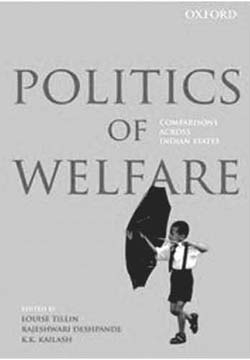Those with some knowledge of the rise and expansion of social welfare states in the West post-Second World War know that social welfare for the socially and economically underprivileged and needy was necessitated for the sake of capitalism in order to mitigate many social and economic tensions. It proved functional for a considerable length of time until about the 1980s when the new Right political philosophy and political economy came out with a virulent assault on social welfare and the public institutional structures built around it. That suggests that welfare or social policy, as it is also known in public policy studies, was a political strategy on behalf of and for the sake of political order and stability in capitalism. But the scenario in India like most other postcolonial developing countries was different in the sense that post-Independence it could not afford to give away things to the market (which in any case it was not able to take on), but had to stand for various provisions for welfare for the large majority of the people. It is true though that in most cases such efforts did not bear fruit. The late Indira Gandhi’s (Prime Minister) so-called ‘garibi hatao’ (1971) has not, arguably, resulted in the removal of poverty. Oddly enough, India does not figure comfortably in any count of global development indices despite decades of social welfare and also over three decades of globalization.
The book under review is pioneering in the sense that an attempt has been made for the first time to pay serious attention to public policy issues in the genre of State politics thus far neglected. On the face of it, globalization and welfare do not go together. India’s GDP today is mostly produced in the private sector suggesting that considerable strides have been made in liberalizing the economy since the 1990s. Nonetheless given the variegated nature of the States, politically, socially and economically, a pro-market public policy without any regard to the needs of the poor and underprivileged cannot simply work. This is for two reasons. First, various Statebased ruling (or in Opposition) parties in the States commit themselves without fail to provide for welfare (e.g., Rupees two a kilogram of rice or a free bicycle to the girls students). The state standing for the market does not go well with the Indian voters. Second, with coalition governments at the Centre with the support of State-based parties, a modicum of social welfare even in the days of reforms is a must. The book focuses on various public policies by the Central government and implemented in the States as well as the ones which are the States’ innovations.
In the Introduction, the editors have sought to provide a common framework within which to locate the diverse State-based field level materials on various subjects: health, education, 100 days rural employment programme (MNREGS), India’s most popular flagship programme, food subsidies, social protection of household maids, etc. The editors emphasize that the role of States in shaping India’s public policies is neglected, but the chapters do not show a case where this has happened. It would have been better to pinpoint the policy origins of national level public policies, and its implications. The States though learn from each other, particularly politically. The editors’ claim of ‘emergent welfare regime’ (p. 1) across India is too tall. Since India is a multi-layered federal political system it is very natural that political environments across the States will be shaping public polices as well their implementation.

